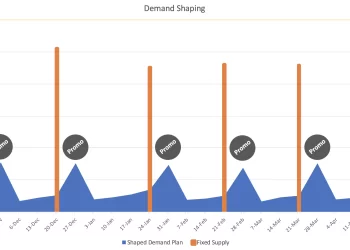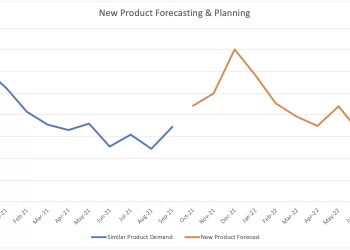Incorporating Big Data into your Demand Management Process

It is hard to overstate the importance of big data to the demand management process. If your organization is not currently leveraging big data, you are already behind your competitors. For many people the phrase “big data” means big dollars and big time commitments. However, there are several ways to incorporate big data technologies without breaking the bank or the back of you and your team.
Understand What Kind of Data Matters Most
Demand management is a data intensive process. But, not all the data your organization collects is relevant. Make sure you focus on the most important data for your demand management process.
Next, you need to prioritize the data that you do need. Not every bit of information is of equal importance, even if it is needed. Once you have a clearer understanding of how you use data and what you could do with better data, you will be able to select the right tools to help you collect, store, and analyze data. Ideally, you will want a cloud based demand management system that gives you immediate access to critical data and analysis.
Collaborate More and Eliminate Information Silos
Demand management is quickly becoming a core function of every successful business. Companies can no longer afford to treat demand management as some mystical process that is a cross between fortune telling and sports betting. For demand management to be successful and for big data technologies to make a significant impact on the bottom line, every part of the company needs to do its part.
This means that every department needs access to the data. It also means that departments cannot be allowed to hold onto information. Information silos must be torn down. Big data technologies allow organizations to grow faster and produce more accurate forecasts through collaboration. But, these technologies are wasted if departments engage in turf wars over data.
Embrace Real-time Analytics
Demand management is not a guess or a gut feeling. It is also more complicated than running a few formulas. Incorporating big data means embracing real-time analytics. Knowing what happened last week is not nearly as valuable as knowing what is happening in the supply chain right now. Big data technologies can allow you to know the moment inventory changes and the moment new inventory is shipped to you. But, that information is only useful if you and your organization are committed to using it to make more accurate forecasts.
Real-time analytics allow you and your team to discover new ways to make the supply chain more efficient. This could mean anything from changing the day of the week something ships to finding new delivery routes. Part of embracing these real-time analytics means accepting you need state of the art tools to help you make sense of all the data coming in.
When incorporated correctly, big data technologies make your job easier. They give you the tools to make better short-term decisions and more accurate long-term predictions. Before you can effectively use these technologies you must prioritize your data, eliminate information silos, and fully embrace the power of real-time analytics.
Written by Jamsheed Iqbal
Topics:
Recent Posts
-
Best Practices for Demand Sensing, Demand Shaping, & Influencing Demand
Despite vast improvements in the tools and techniques available today for demand sensing and demand shaping, a lack of forecast accuracy still prevents many businesses from optimally managing production, distribution, inventories, and sales to meet shifts in demand. This is often because:
October 12, 2021 Read more -
How to Effectively (and Accurately) Forecast and Plan for New Product Demand
Many businesses, large and small, have a huge source of great ideas that can help them improve, innovate, and grow, and yet so many of these companies never think of using this amazing corporate asset. What is this highly valuable asset? Its own people.
September 28, 2021 Read more -
How to Measure your Demand Forecasting Accuracy
Many businesses, large and small, have a huge source of great ideas that can help them improve, innovate, and grow, and yet so many of these companies never think of using this amazing corporate asset. What is this highly valuable asset? Its own people.
July 13, 2021 Read more
Subscribe to email updates from Causometrix!
Stay up-to-date with Causometrix


